A mere two-and-a-half-hour flight from Houston delivers you to the fertile crescent of the New World, a valley isolated in the Sierra Madre mountains of southern Mexico. Oaxaca, the vibrant capital city (of Oaxaca state) with colorful colonial buildings interlocking like a line of Legos, sits at the nexus of the Y-shaped valley. It’s one of the most diverse places in the world, with at least 15 indigenous tribes, 16 languages, 154 dialects, and more kinds of native cacti than anywhere else—not to mention a different mole sauce for every day of the week.
There are two seasons here—warm, beautiful, and dry, and warm, beautiful, and wet—and two aesthetics to match, minimalist and maximalist. Just across from the Templo de Santo Domingo de Guzmán, with its 23.5-karat-gold-filigree ceiling, you’ll find the airy, white-washed Instituto de Artes Gráficas de Oaxaca, founded by Francisco Toledo, one of Mexico’s most famous contemporary artists. Markets overflow with practical palm baskets and alebrijes, wood-carved animals painted in neon hues reminiscent of fever dreams. Wool and cotton fabrics with simple geometric motifs lie beside bright embroidered floral dresses. This is the land of craft—as heritage, as livelihood, as a way of life. You’ll go to Oaxaca for the weekend, but you’re likely to carry away one of its aesthetics with you for good. Here’s a visual guide to help you plot the perfect three-day trip.

FRIDAY
Francisco Toledo is, as one longtime expat put it, the visual mafia boss of Oaxaca; nothing escapes his distinctive stamp. Fortunately, it’s an exquisite one. Regardless of what’s on show, the intimate museums in the historic downtown—one dedicated to stamps, others to photography, textiles, and graphic arts—are all worth a gander.

Duck into the narrow Mezcalería Los Amantes for a stimulating shot of mezcal (connoisseurs often order the clear joven—or “young”—variety to taste the agave). Or, if sweets are your poison, try the cinnamony hot chocolate at the Oaxacan Coffee Company or at Brújula Café.
Train your eye at Tienda Q, a minimalist boutique that offers artistic interpretations of local crafts (palm baskets turned into tote bags, corn husks braided into necklaces).

As soon as the sky begins to golden, snag an Acapulco chair on the rooftop patio of Casa Oaxaca El Restaurante,which has perfected the “mezcalini.” Order the superb gingery one.

Take a cab (40 pesos, or roughly $3) to La Teca, in the Xochimilco neighborhood. Deyanira Aquino’s absurdly delicious Isthmian specialties, like garnachas, beef estofado, and simple corn tamales with queso, are served in a no-frills room in her renovated garage and must be relished on your first night so you can return twice more.
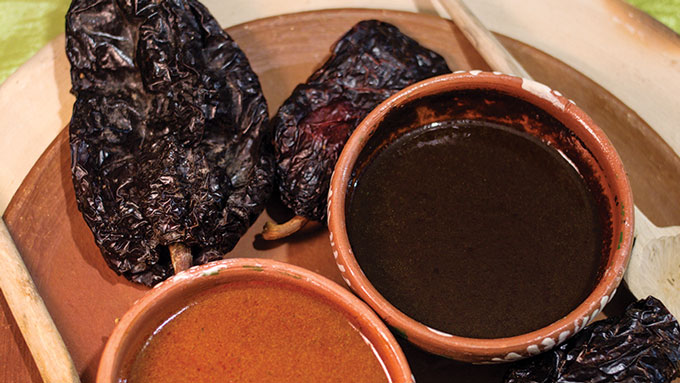
SATURDAY
After a splendid sleep at Casa Oaxaca, linger over their white-tablecloth breakfast. The mole-cheese enchiladas are some of the best in town—and probably, the world. Oaxaca is known for its traditional Mexican food, one of a few cuisines recognized by UNESCO.
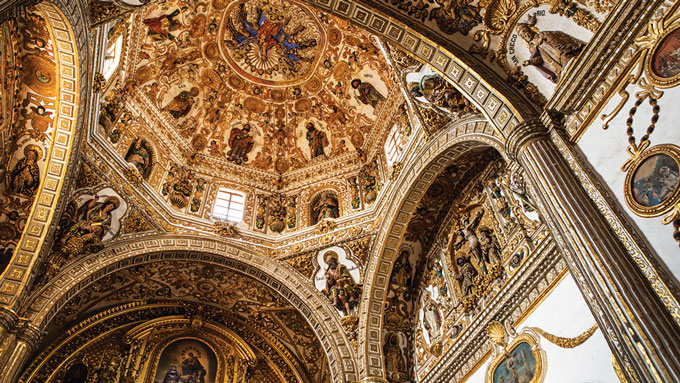
After gawking at Santo Domingo, head to the southeast corner to enter its ethnobotanical garden, which is open to the public, by tour only, several times a week (tours are available in English Thursday and Saturday mornings at eleven). Docents narrate a fascinating history of the New World through the wild plants that people have conquered. Take, for instance, corn, which is practically a religion in Oaxaca. It was first domesticated six thousand years ago in this region, and today there are at least 38 varieties that exist only in this place.
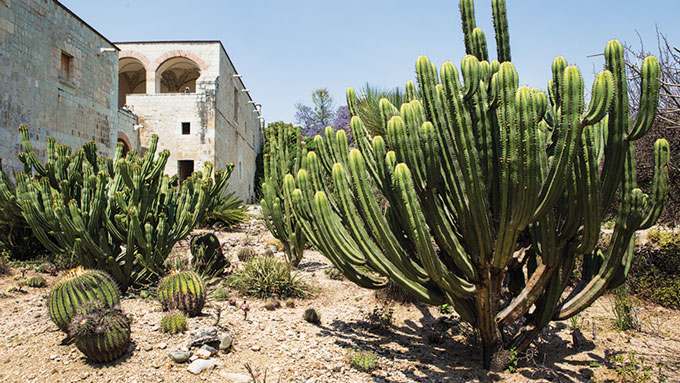
Wander up Manuel Garcia Vigil Street and peek into the courtyard of the Instituto Oaxaqueño de las Artesanías, also known as ARIPO, the government-run arts and crafts shop—or really, multiple shops, one for each of the valley’s specialties, like alebrijes, black pottery, tapestries, palm hats, and metalwork, among many, many others.
Behind the Templo de Santo Tomás, in the Xochimilco neighborhood, vendors and artisans gather on Saturdays and Sundays at the peaceful El Pochote Market. Order tlayudas with squash blossoms fresh off the griddle and sip the pre-Hispanic specialty tejate, a frothy, earthy drink made out of maize flour, fermented cocoa beans, and fragrant white flor de cacao.
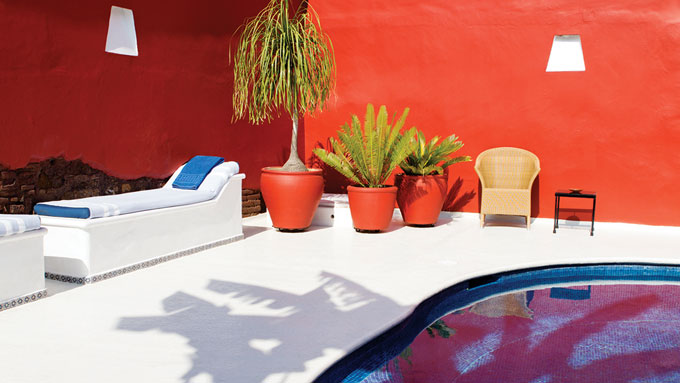
Take a dip in the designer pool at Casa Oaxaca, then doze beneath the bougainvillea on the lovely lawn chairs before freshening up for supper in the swank courtyard of Los Danzantes, with its zigzagging mud-brick walls and hanging vines.

SUNDAY
Founded around 500 BC, the astonishing Monte Albán pyramid complex, just six miles west of the city, dramatically overlooks the Valley of Oaxaca. It was one of the earliest Mesoamerican cities and served as the economic and political center of the highly sophisticated Zapotec society. The grounds include remnants of stunning palaces and a ball court for only the most fearless contestants—it’s believed that winners of the ceremonial game were sacrificed.
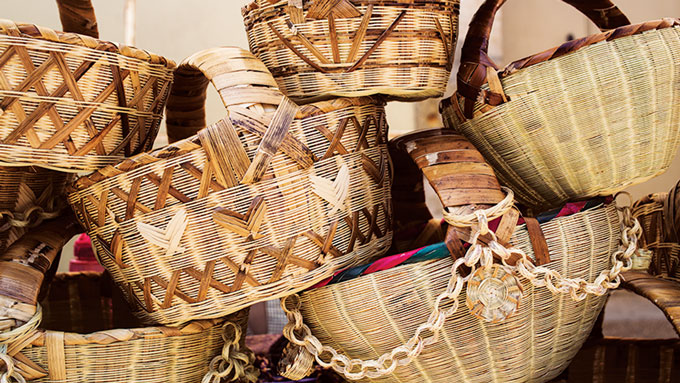
Every Sunday the city of Tlacolula de Matamoros, located twenty miles from Oaxaca, holds one of the largest and busiest markets in the state: eight blocks of vendors hawking everything from peppers to pottery to pigs’ tails beneath colorful tarps. Sample the chapulines (fried grasshoppers), sugarcane, pan dulce, and goat barbacoa served in a broth with onions on top.
- More About:
- Mexico









